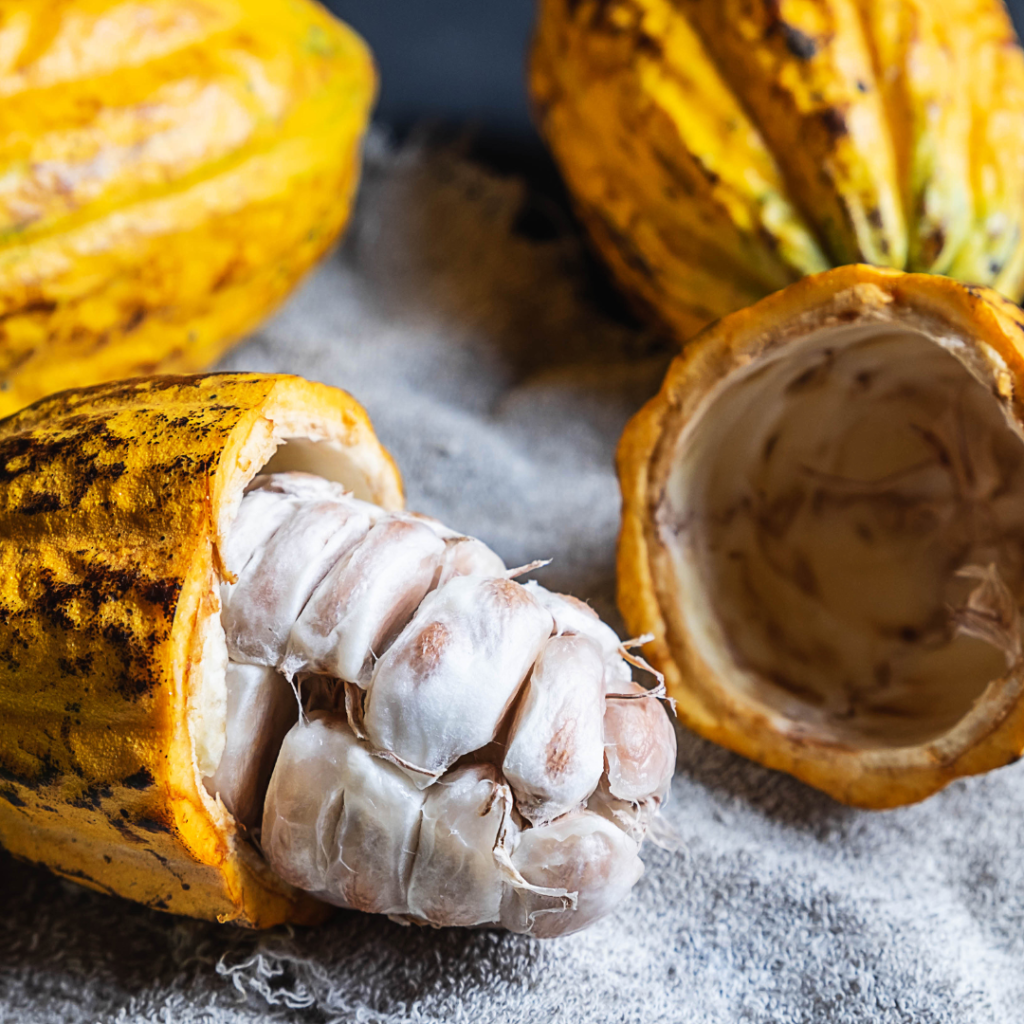Chocolate vs Carob; What’s the difference?
Carob and chocolate are two popular treats that many people love to indulge in. While they may look similar, they come from different plants and have different nutrient profiles. In this blog post, we’ll explore the differences between carob and chocolate, the nutrients in both, and how each nutrient benefits the body.

Carob vs. Chocolate
Carob comes from the carob tree, which is native to the Mediterranean region. The tree produces pods that are ground into a powder that can be used as a chocolate substitute. Carob is naturally sweet and has a nutty flavour. It doesn’t contain caffeine or theobromine, which are found in chocolate, and is a good source of fibre and antioxidants.
Chocolate, on the other hand, comes from the cacao plant, which is native to Central and South America. The plant produces pods that are harvested and fermented to create cocoa beans, which are then processed into chocolate. Chocolate is rich in flavanols, which have been linked to heart health and improved cognitive function. It also contains caffeine and theobromine, which can give you a boost of energy.
Nutrients in Carob
Carob is a great alternative for those who are sensitive to caffeine or theobromine. Here are some of the nutrients found in carob and how they benefit the body:
- Fiber – Carob is a good source of fibre, which helps regulate digestion and promotes feelings of fullness.
- Antioxidants – Carob contains polyphenols, which are powerful antioxidants that can help protect the body from oxidative stress and inflammation.
- Calcium – Carob is a good source of calcium, which is essential for strong bones and teeth.
- Iron – Carob contains iron, which is important for the production of red blood cells and oxygen transport throughout the body.
Nutrients in Chocolate
Chocolate is a delicious treat that is rich in flavour and nutrients. Here are some of the nutrients found in chocolate and how they benefit the body:
- Flavanols – Chocolate is rich in flavanols, which have been linked to heart health, improved cognitive function, and reduced inflammation.
- Magnesium – Chocolate contains magnesium, which is important for muscle and nerve function, blood sugar regulation, and bone health.
- Iron – Chocolate contains iron, which is essential for the production of red blood cells and oxygen transport throughout the body.
- Zinc – Chocolate is a good source of zinc, which is important for immune system function, wound healing, and cell growth and division.
Fair Trade vs. Non-Fair Trade Chocolate
When it comes to purchasing chocolate, it’s important to consider whether it’s fair trade or non-fair trade. Fairtrade chocolate is made with cocoa beans that have been sourced from farmers who have been paid a fair wage for their work. Non-fair trade chocolate, on the other hand, may be made with cocoa beans that have been sourced from farms that use exploitative labour practices.
By choosing fair-trade chocolate, you can support ethical and sustainable practices in the cocoa industry and help improve the lives of cocoa farmers around the world.
Dark Chocolate vs. Milk Chocolate
When it comes to chocolate, there are two main types: dark chocolate and milk chocolate. While both can satisfy a sweet tooth, they differ in terms of their nutritional value and potential health benefits. In this blog post, we’ll explore the differences between dark chocolate and milk chocolate and why dark chocolate may be a healthier choice.
Dark Chocolate:
Dark chocolate is made by combining cocoa solids, cocoa butter, and sugar. It has a higher percentage of cocoa solids than milk chocolate, typically ranging from 70% to 99%. Dark chocolate has a rich, intense flavour that is slightly bitter due to the lack of added milk and sugar.
Nutritional Benefits of Dark Chocolate:
- High in antioxidants: Dark chocolate is a rich source of flavonoids, which are antioxidants that can help protect the body against oxidative stress and inflammation.
- May lower blood pressure: Some studies have suggested that the flavanols found in dark chocolate may help lower blood pressure by improving blood flow and relaxing blood vessels.
- May improve brain function: The flavanols in dark chocolate may also have positive effects on brain function, such as improving memory and cognitive function.
- May reduce the risk of heart disease: Some research suggests that consuming dark chocolate may help reduce the risk of heart disease by improving cholesterol levels and reducing inflammation.
Milk Chocolate:
Milk chocolate is made by adding milk powder or condensed milk to cocoa solids, cocoa butter, and sugar. It typically contains fewer cocoa solids than dark chocolate, ranging from 10% to 50%. Milk chocolate has a creamier, sweeter taste than dark chocolate due to the added milk and sugar.
Nutritional Benefits of Milk Chocolate:
- Contains calcium: Milk chocolate contains calcium due to the added milk powder or condensed milk.
- May improve mood: Chocolate, in general, contains a compound called phenylethylamine, which can trigger the release of endorphins and serotonin, two chemicals that can improve mood.
Why is Dark Chocolate a Healthier Choice?
While both dark chocolate and milk chocolate can be enjoyed in moderation, dark chocolate is often considered the healthier choice due to its higher percentage of cocoa solids and lower sugar content. The flavonoids found in dark chocolate have been shown to have positive effects on heart health, brain function, and overall antioxidant status. Additionally, dark chocolate contains less added sugar and milk than milk chocolate, making it a lower-calorie and lower-fat option.
In conclusion, dark chocolate and milk chocolate have distinct differences in taste and nutritional value. While milk chocolate may provide some mood-boosting benefits and a sweeter taste, dark chocolate is a more nutritious option due to its higher percentage of cocoa solids and potential health benefits. If you’re a chocolate lover, try opting for dark chocolate with a high percentage of cocoa solids and enjoy it in moderation as part of a balanced diet.
Chocolate Allergies
While chocolate is a beloved treat for many, it can cause allergic reactions in some people. Some of the compounds found in chocolate, including histamine, phenylethylamine, and caffeine, can trigger allergic reactions in sensitive individuals. Additionally, some people may be sensitive to the sugar, milk, or soy in chocolate.
Symptoms of a chocolate allergy may include hives, itching, nausea, vomiting, diarrhoea, and difficulty breathing. If you suspect that you have a chocolate allergy, it’s important to talk to your doctor or an allergist to determine the cause and the best course of action.
Disclaimer: The information provided on this blog is for general informational purposes only and should not be construed as medical advice or used as a substitute for professional medical advice, diagnosis or treatment. Always seek the advice of your physician or other qualified healthcare providers with any questions you may have regarding a medical condition. Never disregard professional medical advice or delay in seeking it because of something you have read on this blog. Reliance on any information provided on this blog is solely at your own risk. The author(s) and publisher of this blog are not responsible for any errors or omissions in any content herein.


